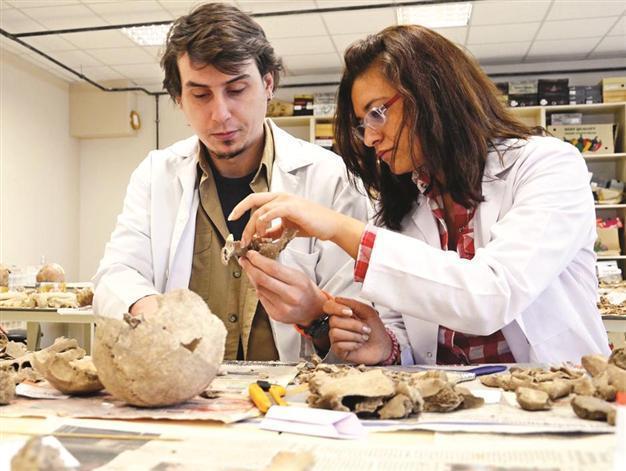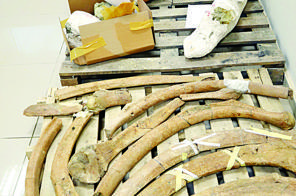Five million-year-old fossils to go on display at museum
BURDUR - Anatolia News Agency

Among the fossils are remains of elephants, rhinoceroses, horses and some bird types, as well as many marine shells. They are being examined at Mehmet Akif Ersoy University. AA photo
Fossils of regional mammals that have been unearthed during excavations in the southern province of Burdur’s Elmacık village between 2006 and 2009, dating back some 5 million years, are being examined at Mehmet Akif Ersoy University (MAKU).Professor Arzu Demirel of the MAKU Anthropology Department said Burdur was known to be a habitat area throughout history due to its favorable seasonal conditions, and the remains of animal fossils were found particularly in the lake basin.
Pliocene period
The Burdur Lake Basin dates from the geological period known as the Pliocene Epoch, which extended from about 5.3 million to 2.5 million years ago, and it is often referred to as the Pliocene Lake Basin, she said. “The region is located at a significant geographical crossroads in Anatolia, and there is a very likely possibility that it was on animal migration routes in the past,” she said, adding that the data found during the Elmacık Village Fossil Rescue excavations carried out by the Burdur Museum gave important clues about vertebrates.
Demirel said many mammal fossils were found in excavations between 2006 and 2009. “Among the fossils are remains of elephants, rhinoceroses, horses and some bird types as well as lots of marine shells. Most of the fossils are of elephants. There are the remains of the tusks of these creatures as well as their skeletons.”
 They have also carried out surface surveys in the basin since 2010 to find the fossil beds of other mammals, Demirel said.
They have also carried out surface surveys in the basin since 2010 to find the fossil beds of other mammals, Demirel said.She said the Burdur region included the Pliocene Lake Basin. “This is an area migrating mammals passed through. It means that Burdur was home to these mammals. Fossils give us this idea, too. We have 5 million-year-old mammal fauna.”
The fossils will be displayed at the Natural History Museum currently under construction, she said. “Work is being carried out by the Culture and Tourism Ministry to transform the Burdur Greek Kavaklı Church into the Natural History Museum. A scientific project is being prepared to make the region favorable for these fossils.” Burdur is the meeting point of all routes in the western Mediterranean, the MAKU rector, Professor Mustafa Saatcı, said. “We are very excited about these fossils. They are very important and valuable. Maybe they will mark an era.”
















